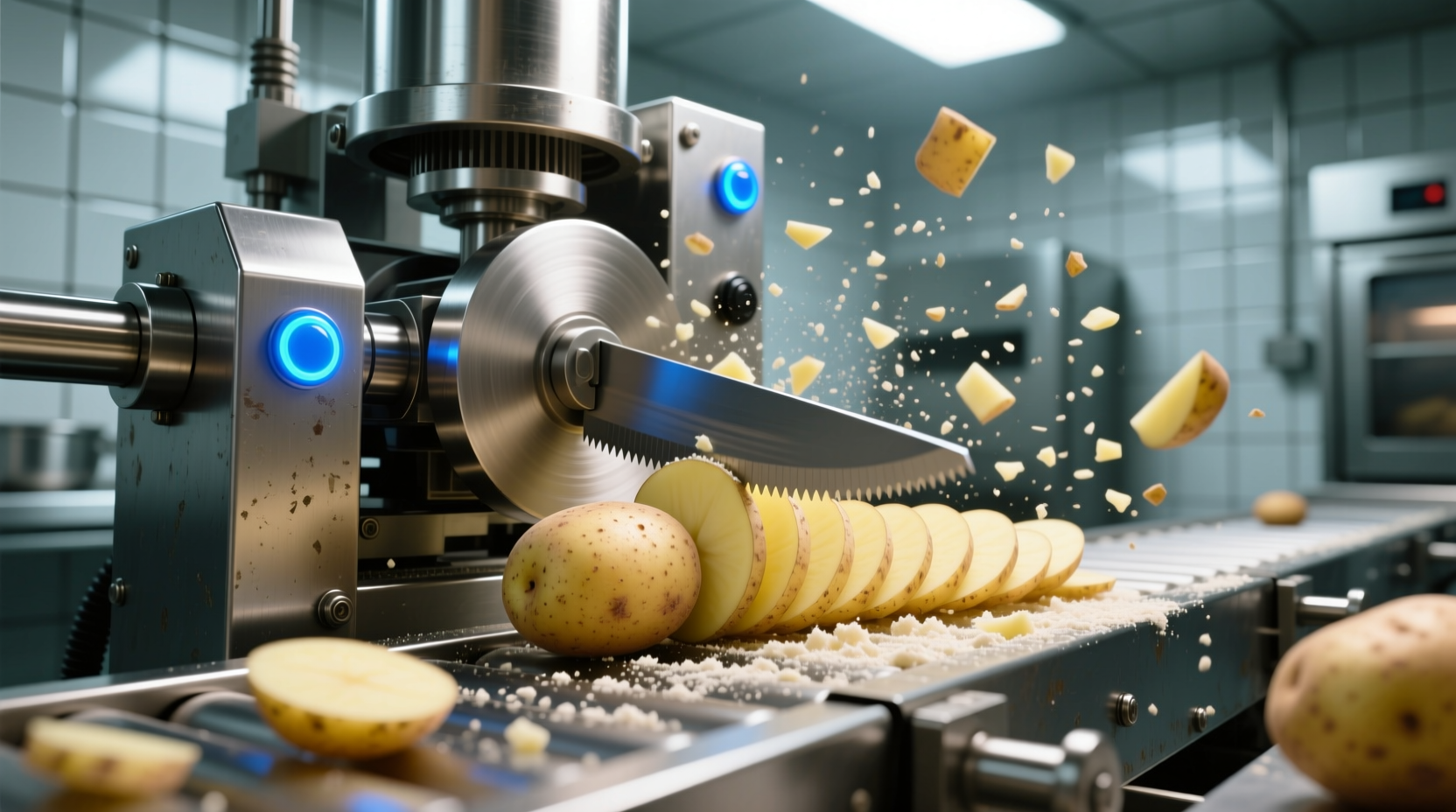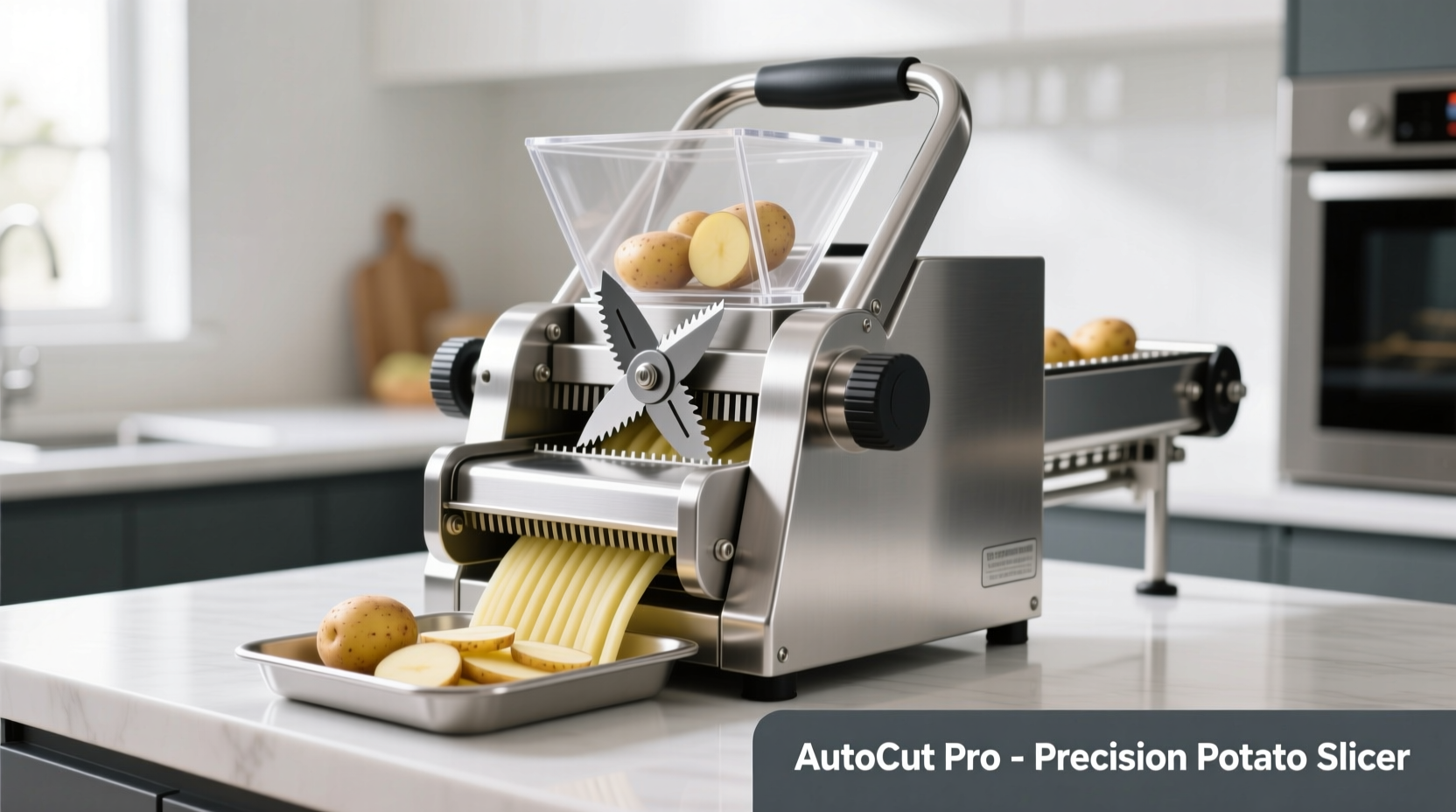Understanding Potato Cutter Machines: Types and Functions
When selecting a potato cutter machine, understanding the fundamental types is essential. Modern cutters fall into two primary categories: manual and electric models, each serving distinct kitchen needs.
Manual potato cutters typically feature a hand-crank mechanism or push-button design that requires physical effort but offers precise control over the cutting process. These models excel in home kitchens where space is limited and occasional use is expected. Electric models, by contrast, feature motorized blades that handle high-volume processing with minimal user effort—making them indispensable in commercial settings.

Choosing the Right Potato Cutter for Your Kitchen
Selecting the appropriate potato cutter depends on several critical factors that align with your specific cooking requirements and kitchen environment. Consider these key decision points before making your purchase:
| Feature | Home Kitchen Models | Commercial Models |
|---|---|---|
| Capacity | Processes 1-3 pounds per minute | Handles 20+ pounds per minute |
| Blade Options | 2-3 interchangeable blades | 5+ specialized blades |
| Safety Features | Basic pusher tools | Automatic shut-off, dual-hand operation |
| Durability | Plastic components, aluminum blades | Stainless steel construction throughout |
According to the National Kitchen Safety Institute's 2024 equipment report, improper selection of food preparation tools accounts for 23% of kitchen cutting injuries. Choosing equipment that matches your actual usage patterns—not just your budget—is crucial for both safety and efficiency.
Practical Usage Guide: Maximizing Your Potato Cutter's Performance
Proper technique transforms your potato cutter from a simple appliance into a precision kitchen tool. Follow these professional-tested methods for optimal results:
Preparation is key: Wash and scrub potatoes thoroughly before cutting. Remove any eyes or blemishes with a paring knife. For best results, chill potatoes in the refrigerator for 30 minutes before processing—this firms the texture and creates cleaner cuts.
Safety protocols: Always use the provided food pusher—not your hands—to guide potatoes toward the blades. Keep fingers well clear of the feed chute. For electric models, ensure the machine is unplugged during blade changes or cleaning. The Occupational Safety and Health Administration (OSHA) reports that 68% of food processor injuries occur during improper handling of blades.
Technique variations: For uniform French fries, use a julienne blade and cut potatoes lengthwise. For hash browns, employ a dicing blade with 1/4-inch settings. When preparing potato salads, a waffle cut creates attractive presentation while increasing surface area for dressing absorption.
Maintenance and Longevity: Preserving Your Investment
Regular maintenance extends your potato cutter's lifespan and ensures consistent performance. Follow this professional maintenance schedule:
After each use: Disassemble removable parts according to manufacturer instructions. Rinse blades and cutting chambers immediately to prevent starch buildup. Use a soft brush to clean blade edges—never your fingers. Dry all components thoroughly before reassembly.
Monthly maintenance: Inspect blade sharpness by cutting through a raw potato. If the machine requires excessive force or produces uneven cuts, it's time for blade replacement. Most manufacturers recommend replacing blades every 6-12 months with regular home use, or every 2-3 months in commercial settings.
Storage considerations: Store blades in protective covers to prevent damage and accidental cuts. Keep the main unit in a dry location away from moisture. For electric models, avoid wrapping cords tightly around the unit, which can damage internal wiring.
Safety Considerations: Preventing Common Hazards
Kitchen cutting equipment causes approximately 387,000 emergency room visits annually in the United States, according to the Consumer Product Safety Commission. Understanding these safety boundaries prevents accidents:
Context limitations: Never process frozen potatoes or extremely small pieces that might require manual pushing near blades. Avoid cutting potatoes with sprouts or significant decay, as irregular surfaces increase slip risk. Manual cutters require firm counter placement—never operate on an unstable surface.
Special considerations: Left-handed users should select models with ambidextrous designs or adjustable feed chutes. For households with children, choose models with blade lock mechanisms and store disassembled. Commercial kitchens must follow OSHA guidelines requiring dual-hand operation for industrial cutters processing more than 5 pounds per minute.
Frequently Asked Questions
Can I use a potato cutter machine for other vegetables besides potatoes?
Yes, most potato cutters safely process firm vegetables like carrots, zucchini, and cucumbers. Avoid extremely hard items like frozen foods or soft produce like tomatoes that may slip or become mushy. Always consult your specific model's manual for approved uses.
How often should I replace the blades on my potato cutter?
Home users should replace blades every 6-12 months with regular use. Commercial kitchens processing high volumes need blade replacements every 2-3 months. Dull blades require more force to operate, increasing accident risk and producing uneven cuts.
What's the difference between a mandoline slicer and a potato cutter machine?
Mandoline slicers are manual, handheld tools requiring significant user effort and skill for consistent results. Potato cutter machines feature engineered blades in protective housings, often with motorized options, providing more consistent sizing with enhanced safety features and less physical strain.
Are electric potato cutters worth the investment for home kitchens?
For households preparing potatoes weekly or hosting frequent gatherings, electric models save significant time and effort. If you regularly cook for 4+ people or value consistent results for dishes like gratins or roasted potatoes, the investment typically pays off within 6-12 months through reduced food waste and preparation time.











 浙公网安备
33010002000092号
浙公网安备
33010002000092号 浙B2-20120091-4
浙B2-20120091-4